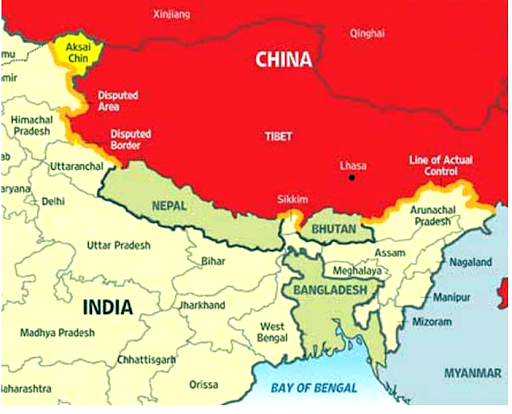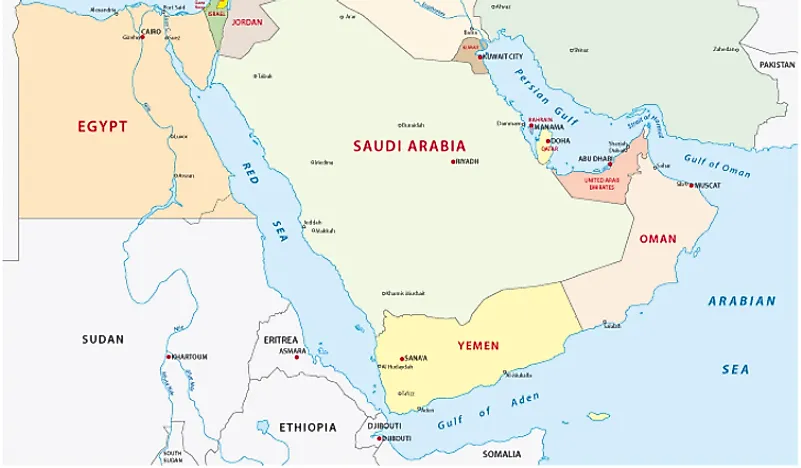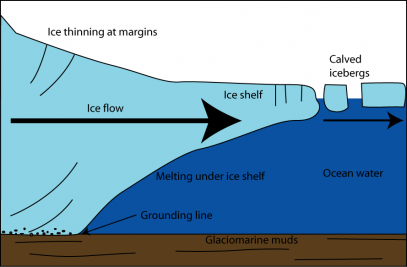International Relations
China’s New Strategic Highway
Why in News
Recently, China has completed construction of a strategically significant highway enabling greater access to remote areas along the disputed border with Arunachal Pradesh in India.
Key Points
- About:
- The construction began in 2014 and is part of a wider infrastructure push in border areas in Tibet.
- The highway passes through the Grand Canyon of the Brahmaputra river (Yarlung Zangbo in Tibet).
- The Brahmaputra is the longest river in Tibet and its valley is the world's deepest with a 7,000-metre drop from the highest mountain peak to the lowest basin.
- It connects Pad Township in the city of Nyingchi and Medog County.
- Nyingchi and Medog County both are located in Tibet Autonomous Region (TAR), China.
- Medog is the last county in Tibet, which is located close to the Arunachal Pradesh border.
- China claims Arunachal Pradesh as part of South Tibet, which is firmly rejected by India. The India-China border dispute covers the 3,488-km-long Line of Actual Control (LAC).
- The Highway will shorten the road length connecting the city proper of Nyingchi and Medog County and will reduce the travel time by eight hours.
- Other Strategic Constructions by China:
- Railway Line:
- In 2020, China had begun work on a strategically significant railway line that will link Sichuan province with Nyingchi in Tibet, which lies close to Arunachal Pradesh border.
- It is the second major rail link to Tibet after the Qinghai-Tibet railway that opened in 2006.
- In 2020, China had begun work on a strategically significant railway line that will link Sichuan province with Nyingchi in Tibet, which lies close to Arunachal Pradesh border.
- New Villages:
- In January 2021, there were reports of Chinese construction of three villages in Arunachal Pradesh 5 kilometres from the Bum La pass.
- In 2020, satellite images emerged showing a new village called Pangda built 2-3 km into what Bhutan sees as its land.
- In 2017, the TAR government launched a plan to build moderately well-off villages in border areas.
- Under this plan 628 first line and second line villages — referring to those right on the border and others in remote areas slightly further within — would be developed in the prefectures of Ngari, Shigatse, Shannan and Nyingchi, along China’s borders with India, Bhutan and Nepal.
- Railway Line:
- Concerns for India:
- The highway is also expected to play a key role in the surveying of and planning for the mega Yarlung Zangbo hydro-power project that China is planning to build at the canyon in the same Medog county, triggering unease among downstream countries like India.
- A highway connecting the border will largely improve the efficiency and convenience of military personnel and material transportation and logistical supplies in the border area.
- Steps Taken by India:
- India will spend 10% funds of the Border Area Development Programme (BADP) only to improve the infrastructure along the China border.
- The Border Roads Organisation (BRO) constructed the Daporijo bridge over Subansiri river in Arunachal Pradesh.
- It links roads leading upto the LAC between India and China.
- Foundation of a tunnel at Nechiphu in West Kameng district of Arunachal Pradesh has been laid down which will shorten travel time for troops till the LAC through Tawang, which China claims to be its territory.
- A tunnel is being constructed under the Se La pass in Arunachal Pradesh which connects Tawang to the rest of Arunachal and Guwahati.
- The state government of Arunachal Pradesh has advocated selection of 10 census towns along the India-China border as pilot projects for infrastructure development in order to stop people living along its international borders, specifically with China, from migrating to faraway urban centres in the State.
- Sisseri River Bridge, located at lower Dibang Valley in Arunachal Pradesh, connects Dibang Valley and Siang.
- In 2019, the Indian Air Force inaugurated resurfaced runway at India’s easternmost Village-Vijaynagar (Changlang district) in Arunachal Pradesh.
- In 2019, the Indian Army conducted exercise ‘HimVijay’ in Arunachal Pradesh and Assam with its newly created Integrated Battle Groups (IBG).
- Bogibeel bridge, which is India’s longest road-rail bridge connecting Dibrugarh in Assam to Pasighat in Arunachal Pradesh was inaugurated in 2018.
- It will facilitate quicker movement of troops and equipment to areas near the India-China border.
Way Forward
India needs to be vigilant enough for any new development in China near its border to protect its interests efficiently. Further, it needs to build robust Infrastructure in difficult border areas in its territory to ensure movement of personnel and other logistical supplies in an efficient manner.
International Relations
India, Oman MoU
Why in News
Recently, India and Oman renewed the Memoranda of Understanding (MoUs) on military cooperation as well as on maritime security.
Key Points
- India-Oman Relationship:
- The Sultanate of Oman is a strategic partner of India and an important speaker at the Gulf Cooperation Council (GCC), Arab League and Indian Ocean Rim Association (IORA) fora.
- India is a member of IORA but not a member of GCC and Arab League.
- India and Oman are linked by geography, history and culture and enjoy warm and cordial relations, which are attributed to historical maritime trade linkages, intimacy of the Royal family with India and the seminal role played by Indian expatriate community in building Oman, which is acknowledged by the Omani Government.
- Institutional mechanisms like Joint Commission Meeting (JCM) and Joint Business Council (JBC) oversee economic cooperation between the two.
- Key bilateral agreements/MoUs cover cooperation in Defence; peaceful uses of Outer Space; Extradition; Legal and judicial cooperation in civil and commercial matters; Agriculture; Civil Aviation; Avoidance of Double Taxation; Maritime issues; etc.
- The Sultanate of Oman is a strategic partner of India and an important speaker at the Gulf Cooperation Council (GCC), Arab League and Indian Ocean Rim Association (IORA) fora.
- Defence Cooperation:
- In West-Asia, Oman is one of India’s oldest defence partners and an ally in anti-piracy campaigns.
- India has supplied rifles to Oman. Also, India is considering setting up a defence production unit in Oman.
- India and Oman conduct regular biennial bilateral exercises between all three services.
- Army exercise: Al Najah
- Air Force exercise: Eastern Bridge
- Naval Exercise: Naseem Al Bahr
- Maritime Cooperation:
- Oman is at the gateway of Strait of Hormuz through which India imports one-fifth of its oil imports.
- The berth rights given by Oman to Indian vessels is important for the Indian Navy to carry out anti-piracy operations in the Gulf of Aden.
- India signed a pact with the country in 2018 to access the Duqm port of Oman.
- India is working closely with Oman to enhance strategic depth in the region and add heft to its Indo-Pacific vision in the Western and Southern Part of Indian Ocean.
- India needs its support to counter the growing Chinese foothold in the region.
- India is concerned with China’s acquisition of strategic assets in the region including setting its base at Port of Doraleh in Djibouti.
Geography
A-76: World’s Largest Iceberg
Why in News
An enormous iceberg 'A-76' has calved from the western side of the Ronne Ice Shelf, lying in the Weddell Sea, in Antarctica.
- It measures around 4320 sq km in size – currently making it the largest berg in the world.
Key Points
- About A-76:
- The newly calved berg 'A-76' was spotted in recent satellite images captured by the Copernicus Sentinel-1 mission.
- Sentinel-1 is one of the missions of the European Space Agency (ESA) under Copernicus initiative (an earth observation programme).
- It has surpassed the now second-place A-23A, about 3,380 sq km in size and also floating in the Weddell Sea.
- The newly calved berg 'A-76' was spotted in recent satellite images captured by the Copernicus Sentinel-1 mission.
- Iceberg:
- An iceberg is ice that broke off from glaciers or shelf ice and is floating in open water.
- Icebergs travel with ocean currents and either get caught up in shallow waters or ground themselves.
- The US National Ice Center (USNIC) is the only organisation that names and tracks Antarctic Icebergs.
- Icebergs are named according to the Antarctic quadrant in which they are spotted.
- Ice Shelves:
- An ice shelf is a floating extension of land ice. The Antarctic continent is surrounded by ice shelves.
- The Ronne Ice Shelf on the flank of the Antarctic Peninsula is one of the largest of several enormous floating sheets of ice that connect to the continent's landmass and extend out into the surrounding seas.
- Iceberg Calving:
- Meaning:
- Calving is the glaciological term for the mechanical loss (or simply, breaking off) of ice from a glacier margin.
- Calving is most common when a glacier flows into water (i.e. lakes or the ocean) but can also occur on dry land, where it is known as dry calving.
- Recent Cases of Calving:
- Up to the end of the 20th century, the Larsen Ice Shelf (on the West Antarctic Peninsula) had been stable for more than 10,000 years.
- In 1995, however, a huge chunk broke off, followed by another in 2002.
- This was followed by the breakup of the nearby Wilkins Ice Shelf in 2008 and 2009, and A68a in 2017.
- Up to the end of the 20th century, the Larsen Ice Shelf (on the West Antarctic Peninsula) had been stable for more than 10,000 years.
- Meaning:
- Concerns:
- Periodic calving off of large chunks of those shelves is part of a natural cycle, but the process has been accelerated by climate change.
- Average sea levels have risen about nine inches since 1880, and about a quarter of that increase comes from ice melting in the Greenland and Antarctica ice sheets, along with land-based glaciers elsewhere.
- According to a recent study, more ambitious national goals to cut greenhouse gas emissions and slow down climate change set recently are not enough to stop sea levels from rising.
- In fact, melting glaciers and ice sheets will raise sea levels twice as fast as they would if countries fulfilled their earlier pledges under the Paris Agreement.
Science & Technology
Coviself: Self Testing Kit
Why in News
Recently, the Indian Council of Medical Research (ICMR) approved India’s first self-use Rapid Antigen Test (RAT) for Covid-19 named as CoviSelf.
- It is developed by MyLab Discovery Solutions, a Pune-based molecular company.
- ICMR is the apex body in India for the formulation, coordination and promotion of biomedical research, and is one of the oldest medical research bodies in the world.
Key Points
- About:
- It uses a RAT and gives results within 15 minutes. This test is synced with a mobile app, CoviSelf, which will help directly feed the positive case’s report on the ICMR portal.
- ICMR has advised this test only for those who have symptoms or are high-risk contacts of positive patients and need to conduct a test at home.
- This test is not advised for general screening in public places of hawkers, show owners, or commuters.
Rapid Antigen Test
- It is a test on swabbed nasal samples that detects antigens (foreign substances that induce an immune response in the body) that are found on or within the SARS-CoV-2 virus.
- It is a point-of-care test, performed outside the conventional laboratory setting, and is used to quickly obtain a diagnostic result.
- Like RT-PCR (Reverse Transcription Polymerase Chain Reaction), the RAT too seeks to detect the virus rather than the antibodies produced by the body.
- While the mechanism is different, the most significant difference between the two is time.
- In an RT-PCR test, RNA (Ribonucleic acid) is extracted from the swab collected from the patient. It is then converted into DNA (Deoxyribonucleic acid), which is then amplified.
- RT-PCR test takes a minimum of 2-5 hours whereas the maximum duration for interpreting a positive or negative test in RAT is 30 minutes.
- Benefits of Self Testing:
- Cost Effective:
- Swab collection in this case is fairly simple and quick, and reduces overall testing expenditure and the stress of booking appointments in labs.
- It is cheaper than RT-PCR and a RAT in the laboratory.
- Reduced Risk of Transmission:
- A person testing himself at home rather than visiting a hospital or lab, or calling a technician at home, reduces the risk of transmission to others.
- Reliable self-collection and self-testing will reduce population movement, reduce Covid-19 exposure risk.
- Reduced Burden:
- Self-testing will reduce the burden on laboratories that are currently working 24 hours up to full capacity with manpower that is already saturated.
- Mass Surveillance:
- Cheap rapid tests can help in accomplishing the aim of mass surveillance even if their sensitivity to capture accurate results are inferior to other tests.
- Cost Effective:
- Concerns:
- Reliability:
- The reliability of results remains a major concern. The likelihood of the sample not being collected correctly, or the swab stick getting contaminated, is high.
- False Sense of Security:
- RAT comes with a high chance of false negatives. If a Covid-infected person is asymptomatic and tests negative, the test may give a false sense of security.
- Challenge to Response Measures:
- Shifting the responsibility of reporting test results from health professionals and laboratories to individuals could lead to underreporting, and make response measures such as contract tracing and quarantine of contacts even more challenging.
- Reliability:
Way Forward
- Self-tests can be effective if the patient follows isolation norms, feeds correct data and is able to interpret the results accurately.
- However while a RAT serves as a quick mass surveillance tool, over-dependence on it for testing is not advisable. It can supplement, not form, the bulk of testing.
Social Justice
Immediate Subsistence Assistance to Transgender
Why in News
In view of Covid-19 pandemic, the Ministry of Social Justice and Empowerment will give transgender persons a one-time financial assistance of Rs. 1,500.
Key Points
- About the Assistance:
- Immediate subsistence assistance to trans persons would be given through Direct Benefit Transfer (DBT), for which beneficiaries can register with the National Institute of Social Defence.
- National Institute of Social Defence (NISD):
- NISD is an Autonomous Body and is registered under Societies Act XXI of 1860 with the Government of National Capital Territory (NCT), Delhi.
- It is a central advisory body for the Ministry of Social Justice and Empowerment.
- It is the nodal training and research institute in the field of social defence.
- It currently focuses on human resource development in the areas of drug abuse prevention, welfare of senior citizens, beggary prevention, transgender and other social defence issues.
- Major Initiatives Related to Transgender:
- Judgements of the Supreme Court:
- National Legal Services Authority (NALSA) v. Union of India, 2014: The SC declared transgender people to be a 'third gender'.
- Read down the Provisions of Section 377 of the Indian Penal Code (2018): The SC decriminalised same-sex relationships.
- Transgender Persons (Protection of Rights) Act, 2019:
- A transgender person is one whose gender does not match the gender assigned at birth. It includes transmen and trans-women, persons with intersex variations, gender-queers, and persons with socio-cultural identities, such as kinnar and hijra.
- Establishes Natonal Council for Transgender persons.
- Gives right to obtain Certificate of Identity.
- Provides the right of residence with parents and immediate family members.
- Prohibits discrimination against a transgender person in various sectors such as education, employment, and healthcare etc.
- Offences against transgender persons will attract imprisonment between six months and two years, in addition to a fine.
- Transgender Persons (Protection of Rights) Rules, 2020, National Portal for Transgender Persons and the Scheme of ‘Shelter Home for Transgender Persons’.
- Judgements of the Supreme Court:
Important Facts For Prelims
White Fungus
Why in News
As the central government asks states to notify black fungus or mucormycosis an epidemic, an infection called white fungus or Candidiasis has also been found to affect some people.
- Covid-19 patients are more prone to white fungus as it affects the lungs and similar symptoms are created like that of coronavirus.
- Black fungus is a serious but rare fungal infection caused by a group of molds called mucormycetes, which is abundant in the environment.
Key Points
- About:
- White Fungus or Candidiasis is a fungal infection caused by a yeast (a type of fungus) called Candida.
- Candida normally lives on the skin and inside the body, in places such as the mouth, throat, gut, and vagina, without causing any problems.
- Candida can cause infections if it grows out of control or if it enters deep into the body (for example, the bloodstream or internal organs like the kidney, heart, or brain).
- The most common species that causes infection is Candida albicans.
- Cause:
- This infection can be caused due to low immunity, or if people come in contact with things that contain these moulds like water, etc.
- Children and women are more at risk of contracting the fungal infection.
- Like the black fungus, white fungus is also more likely to afflict people with compromised immune systems, pre-existing medical conditions, AIDS, a recent kidney transplant or diabetes.
- This infection can be caused due to low immunity, or if people come in contact with things that contain these moulds like water, etc.
- Symptoms:
- People experience symptoms similar to Covid if it reaches the lungs such as chest infection, despite testing negative for the virus.
- White fungus affects the lungs as well as other parts of the body including the nails, skin, stomach, kidney, brain, private parts and mouth.
- Diagnosis and Treatment:
- CT scans or X-Rays can reveal the condition.
- Patients with the white fungus are currently being treated with known anti-fungal medication.
- Prevention:
- Special caution is required of moulds in water that can lead to infection.
- Proper sanitation is very important.








